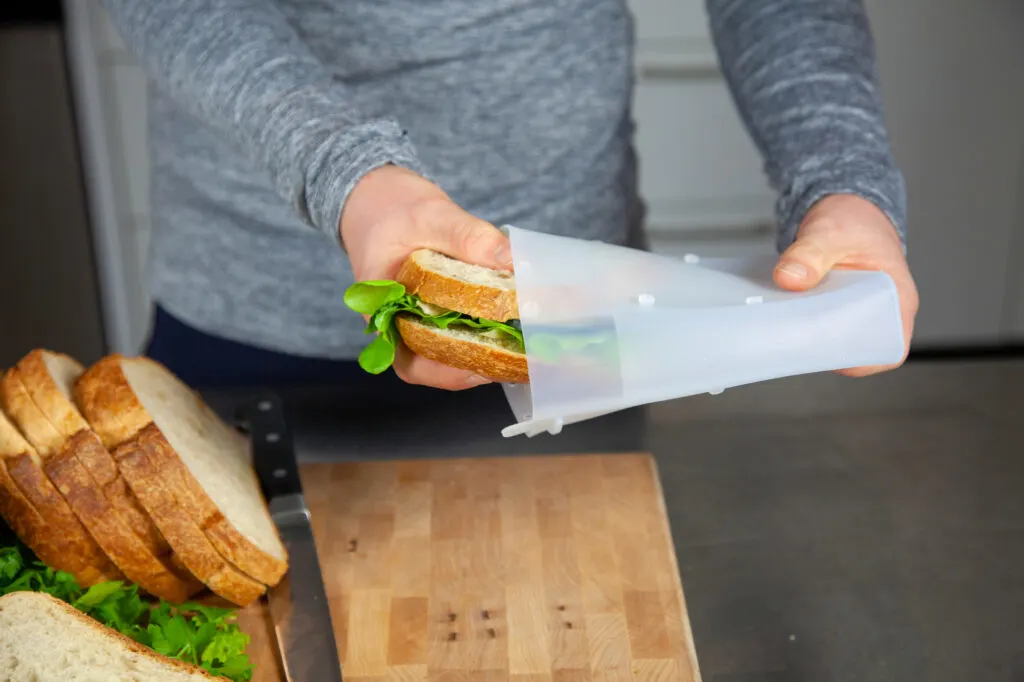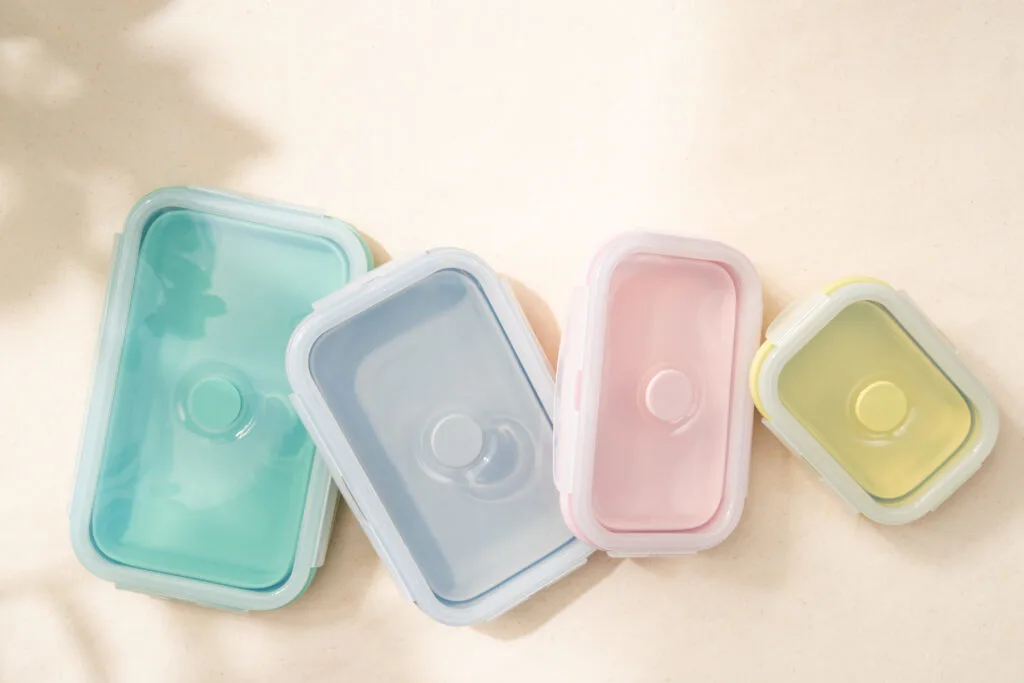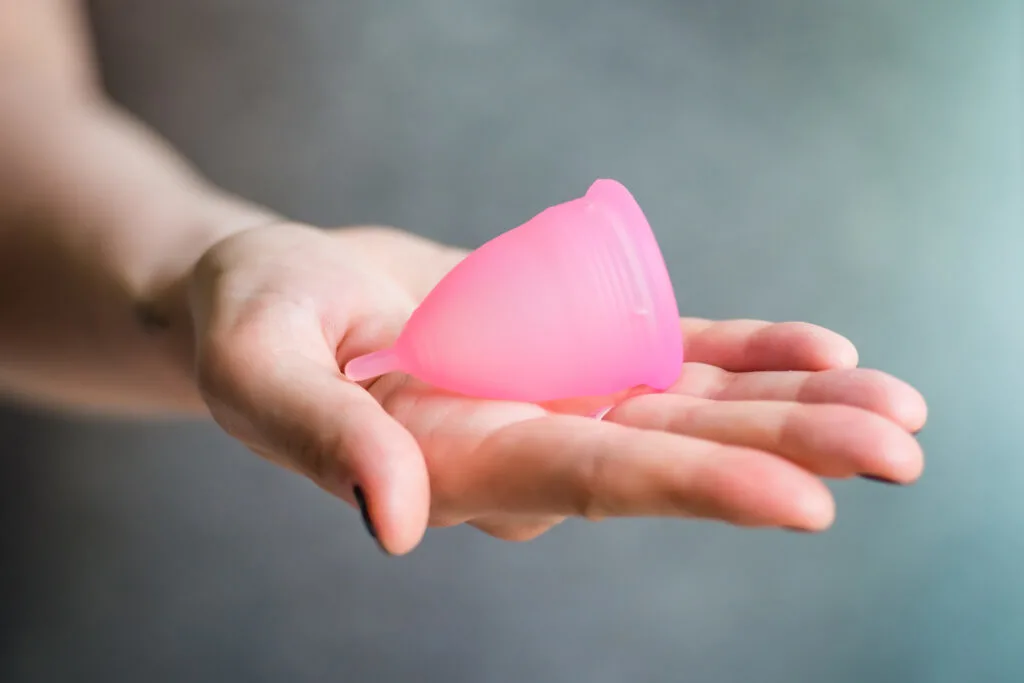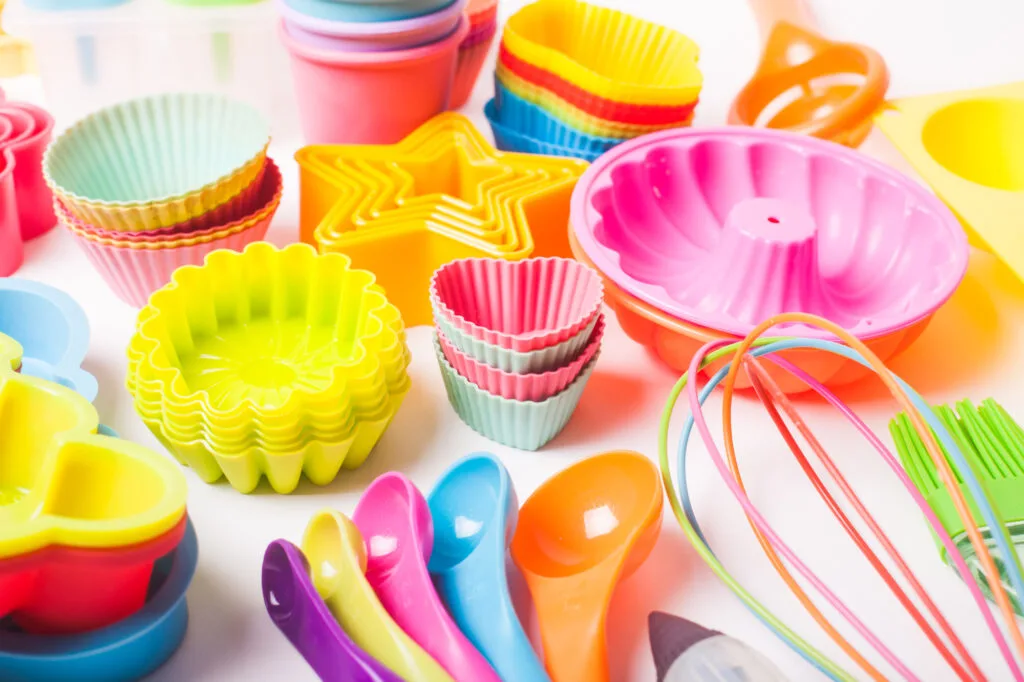Silicone can be found in a lot of products these days. It’s used to manufacture contact lenses, cooking utensils, baby products, medicines, it can be used for certain types of insulation, and utilized as an adhesive too.
But what exactly is it? Is silicone eco-friendly, or is it bad for the environment?
A short answer is, silicone is not the best material, but it’s certainly not the worst, and it is a suitable, more eco-friendly alternative to plastic.
Plastic is a man-made material produced primarily for packaging and single-use, with over 40% being disposed of after one use. The way it is created contributes to a high carbon footprint, plus, when it’s discarded, it takes years to break down and its residue and particles can be harmful to the environment.

Silicone, on the other hand, consists of silicon, which is derived from silica, a natural element similar to sand. The material could be classified as a form of synthetic rubber – a polymer made up of siloxane that doesn’t break down into harmful micro-pieces like plastic. Silicone is flexible and highly resistant, doesn’t contain phthalates or BPA chemicals, plus, it’s odorless and non-toxic.
Although it can be argued that the heating process that transforms the material into a final silicone product can be environmentally damaging, it’s still not as bad as plastic, and silicone is long-lasting, so with the right care, can last for decades.
There’s much to talk about, so let’s find out if silicone is bad for the environment, if it can break down effectively and discover the main differences between silicone and plastic below.

Can silicone break down?
One question often asked is, does silicone break down? The truth is silicone is a strong, durable material which makes it difficult to break down. It has the ability to withstand extreme temperatures, it repels water, resists UV light exposure, and it rarely reacts with other elements.
It’s a material designed for longevity. Studies have shown, that while experimenting with saline and high-temperature conditions, silicone does begin to change its properties and become more brittle, therefore it can break down, but not on its own, it needs help to do so.
So, what does this mean for the environment? Well, it does make silicone safer for wildlife and marine animals as it won’t break down should it end up in the ocean.
However, the fact that silicone doesn’t decompose easily also raises further questions. Will it remain in landfill for hundreds of years if the chances of it breaking down are so small?
Unfortunately, as of yet, silicone isn’t viewed as a fully recyclable material, therefore, a lot currently ends up in general waste which can present an ongoing problem if a solution isn’t found.

Silicone: Is it biodegradable?
Is silicone biodegradable? A short answer is no. If something is biodegradable then it means that living organisms can break down the material until it is absorbed back into nature once more. The term ‘biodegradable’ is made up of the terms ‘bio’ and ‘degradable’. Bio means life, and degradable means decomposable, whether chemically or biologically.
Some good examples of biodegradable items would be food scraps or products made from bamboo. If you were to bury the remnants of these products in the ground or compost them, then check on them a year later, they would have disappeared, being absorbed back into the natural environment.
If you try the same experiment with silicone, you could return year after year to see no improvement at all. The silicone would still remain, albeit slightly weaker or moderately broken down, but it would still exist.
This is because silicone is a hybrid of synthetic rubbers and synthetic plastic polymers. It is powerful, non-reactive, stable, and very resistant to extreme conditions, both environmentally, and temperature-wise, withstanding anything from -55 °C to +300 °C.

How long does silicone take to decompose?
There’s no real answer to this question. Silicone can take between 50 and 500 years to decompose. It will decompose at different rates, depending on the conditions it is exposed to over time.
How bad is silicone for the environment?
Silicone isn’t as bad for the environment as plastic. Firstly, because it’s not single-use, and secondly, because the materials it contains are non-porous and non-toxic. Silicone products can last for decades with care, you only have to look at the range of products it features in.
For example, if you compare menstrual products – the average woman will go through 10,000 or more disposable menstrual products in her lifetime. If we compare those 10,000 disposable products to a menstrual cup that will last 10 years per piece, and with the average woman having around 50 years of menstruation, that is 10,000 disposable products vs just 5 silicone cups. This example alone shows that using silicone reduces a huge amount of waste.
In addition, silicone is not toxic to aquatic or soil organisms and doesn’t produce any hazardous waste, meaning it is still safe when disposed of. Despite silicone not being biodegradable, it can still be recycled by professionals at the end of its lifecycle.

Silicone Vs Plastic: Which is safer?
Silicone is safer than plastic in many ways. In 1979, the US Food and Drug Administration considered the raw material for silicone to be safe enough for food-grade use. Health Canada also confirms no known health hazards have been associated with the use of silicone rubber in cookware. The material doesn’t react with foods and beverages, and it doesn’t produce hazardous fumes which are harmful to the environment like plastic.
There are, however, counter arguments to the above. To date, there hasn’t been a great deal of research released on the actual health effects of silicone when used in products for cooking or for medical purposes.
One study did conclude that there was no release of siloxanes from silicone bakeware and nipples for milk formula and other liquid stimulants over the course of 6 hours. However, after 72 hours a few siloxanes were detected in the alcohol solution.
The conclusion is, using silicone products for short periods of time appears to be safe, until further information becomes available.

Can you recycle silicone?
Is silicone recyclable? Yes, it is possible to recycle silicone, however, there currently aren’t many recycling plants in the US offering the service, so a little research will be needed.
We now know the material is not biodegradable, but it can decompose over time. If you do plan to recycle any old silicone products, they will need to be sent to a specialist recycling centre (such as TerraCycle), to ensure they don’t end up in landfill.
Of course, the easier option is to simply throw the silicone item away in your plastic recycling bin with other garbage, but if you do this, it’s unlikely it will be recycled.
If you have several articles made from silicone, save them up and take them all to a silicone recycling center together. Better still, attempt to recycle them yourself at home!

How do you recycle silicone?
If you do fancy taking steps to recycle your own silicone products at home, here are a few tips and steps to help you.
- Prepare a mold, either creating one yourself or using a utensil of the same shape.
- Your silicone product can be shredded or ground down into small pieces with craft scissors or a blade.
- When these steps are complete and your mold is ready, mix the old silicone together with some fresh silicone which can be purchased in powder form or liquid.
- Research. It may take a little time to figure out how much of the old silicone mix you should add to the new, however, be mindful that using too much of the old mix can reduce the strength of your recycled product.
If this process seems too time-consuming, scientists can also recycle silicone, but these methods can be expensive as they utilize energy-intensive procedures.
More up to date eco-friendly silicone recycling processes can be less energy-intensive, and some lower grade silicone products can be broken down into base chemical components and reused. If you prefer to send your silicone for recycling at a facility, check if they handle silicone, if they do, they will collect and depolymerize the materials to recover the silicone monomers.
When this occurs the materials are then used to make silicone oil which is used as lubricant for machinery across several industries.

Overview
If we are to make a conclusion about silicone, it’s not the best material for the environment, but it’s certainly not the worst either. It has a number of benefits compared to plastic and has exceptional durability, lasting for decades if it’s cared for correctly.
However, until silicone recycling becomes more mainstream and accessible across all locations, and there are more studies of its effects on health, it’s wise to only use the silicone products you really need.
Also thinking about what we will really use and need prior to purchasing, ensures that silicone products don’t add to the landfill issues already prevalent today.
